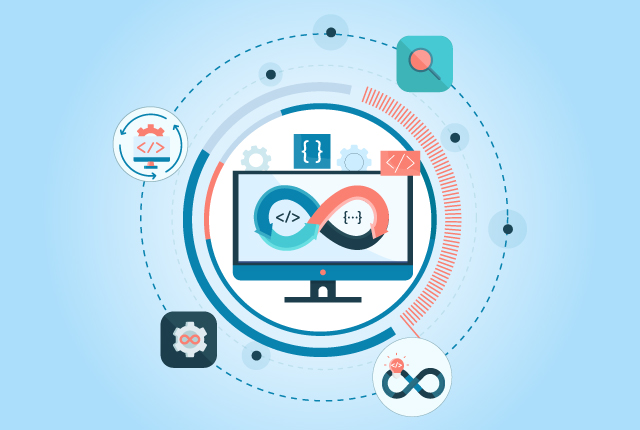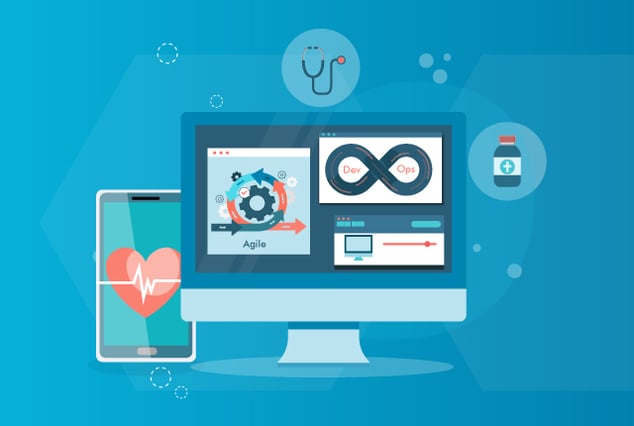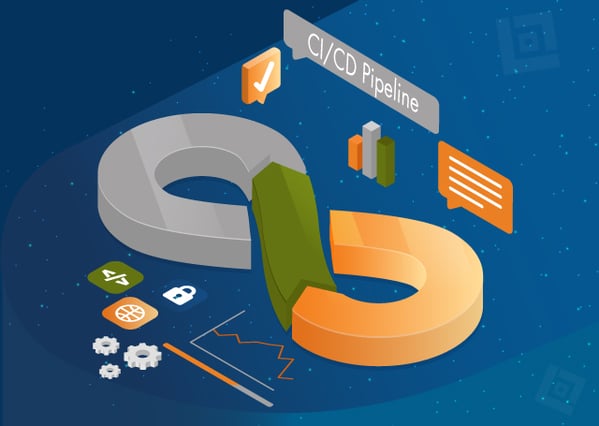
So, you want to be a DevOps team? You’re ready to create a culture at your company that unites development and testing with operations. You want to see measurable results from projects that benefit both your business and your customers. You’re eager to speed up development cycles to remain competitive in your industry without sacrificing security or software reliability.
DevOps can make that happen. But first, you will likely have to make some changes. Let's explore 6 must-haves for your ultimate DevOps testing success.
DevOps can only be as successful as its implementation within your organization. What makes a DevOps team successful is its commitment to key DevOps principles, including communication, collaboration, automation, and customer-centricity. And with the right skills and tools to support your DevOps testing practices, it won’t take long for your team to see results.
Where should you start? Here are six must-haves for every DevOps team and how you can implement each essential at your organization.
-
Strong Communication & Collaboration
Effective communication and collaboration are essential in DevOps. Every team has goals and works close to 100% of the time to achieve them. Every team also speaks professional language and has responsibilities within the company. When these differences aren’t communicated well during the project, it can lead to issues in development, testing, and execution.
Consider incorporating advanced project management and communication platforms like Slack and Microsoft Teams to address this challenge. These tools offer real-time collaboration, chatbots, and seamless integrations with other DevOps tools, furthering communication and collaboration.
The key to success in DevOps testing lies in establishing a foundation of shared and valued goals. Your teams must establish a foundation of shared, valued goals to reach this state. Then, define the most efficient methods of communication across teams, from using a shared professional language and definitions of terms to communication platforms, which can further facilitate efficient information exchange.
Effective collaboration involves regular brainstorming sessions, scheduled touch-base meetings, and the ability to adjust game plans when bottlenecks or issues arise. When teams communicate and collaborate effectively, they achieve better results. All teams should see themselves as part of one organization, working together to achieve shared goals. Putting effort into these initiatives can break down silos and align internal teams to the benefit of the customer and the company as a whole.
-
Solid Understanding of DevOps Key Concepts & Tools
The DevOps testing landscape is ripe with fruitful new tools and technologies. Yet, too many platforms and options can make the environment feel disjointed and riddled with weeds.
There’s not enough time in the day-or a development cycle—to master them all. Fortunately, knowing one’s way around the major DevOps tools is enough to adapt to new tools and technology changes your team may encounter later.
This approach isn’t taking a shortcut-you’ll find that your team gains a deeper understanding of these technologies more quickly. That’s because great DevOps engineers and testers are driven by curiosity, so it won’t take long for your team to uncover the commonalities between these major DevOps tools.
Here's a list of the major DevOps tools and concepts mentioned:
-
Source Control: Git, Bitbucket, SVN, VSTS
These tools are essential for managing and versioning source code.
-
Continuous Integration/Continuous Deployment(CI/CD): Jenkins, Bamboo, TeamCity, Github Actions, Azure DevOps, CircleCI, GitLab CI/CD, Travis CI, Drone, Buildkite
CI/CD tools automate code building, testing, and deployment, ensuring a smooth software development lifecycle.
-
Configuration Management and Infrastructure as Code(IaC): Puppet, Chef, Ansible, SaltStack, Terraform, AWS CloudFormation
IaC tools automate the provisioning and management of infrastructure, making it more efficient and repeatable.
-
Deployment Automation: Jenkins, VSTS, Octopus Deploy, and Spinnaker
These tools automate the deployment process, ensuring consistency and reliability.
-
Container Concepts: Docker, Vagrant, and LXD
Containers are used to package and run applications consistently across different environments.
-
Orchestration: Kubernetes, Mesos, Docker Swarm, Nomad.
Orchestration tools manage the deployment and scaling of containers in a cluster.
-
Cloud Platforms: AWS, Azure, GoogleCloud (GCP), OpenStack, Oracle Cloud, Digital Ocean, and IBM Cloud
Cloud platforms provide scalable infrastructure and services for DevOps practices.
-
DevOps Collaboration: Slack, Microsoft Teams, Jira and Confluence, and Github Discussions
Collaboration tools facilitate communication and teamwork among DevOps teams.
-
Logging and Monitoring: ELK Stack, Prometheus, Grafana, Datadog, and New Relic.
These tools help monitor applications and infrastructure, allowing for quick identification and resolution of issues.
-
-
Stringent Security & Data Protection Protocols
It’s easy to see why DevSecOps (security DevOps) is an industry buzzword. DevSecOps aims to ensure that security is integrated into the entire DevOps process, just like development, testing, and operations. In other words, it’s about making security integral to every step in software development and deployment.
In today's technology landscape, strong security measures are crucial. More robust security measures are a must to have – especially if you’re developing software for highly regulated industries such as banking and financial services, healthcare and biotech, legal tech, cybersecurity, energy, transportation, and more. Security breaches can have severe consequences in these sectors and can lead to vulnerabilities.
DevOps aims to speed up development, testing, and releasing software more rapidly. However, this acceleration can introduce vulnerabilities if security isn't given equal attention. It's important to note that faster development cycles should not come at the cost of security.
Hence, the importance of DevSecOps becomes essential in addressing this challenge. By implementing robust security practices and data protection measures, DevOps teams can ensure that vulnerabilities are identified, documented, and fixed before the software is launched to the market.
-
Continuous Integration & Delivery of Automation
Software developers often work in isolation to get the job done. However, it’s this isolation that can lead to merge conflicts in code integration, from duplicating efforts and diverging code strategies to making bugs hard to detect or fix.
DevOps teams employ Continuous Integration (CI) to overcome these challenges. Successful DevOps teams rely on Continuous Integration to keep the main branch clean. Continuous Integration(CI)is the automation process involving building and testing code each time someone on your team commits changes to version control. This is a significant part of the build pipeline because Continuous Integration unites developers to code within the master copy, effectively merging the data for DevOps testing and deployment.
Tools such as Jenkins, Bamboo, Froglogic, CircleCI, Github Actions and TeamCity to name a few, can support your team’s initiative to make this happen. You can also solidify your team’s understanding by encouraging certification in Continuous Delivery Architecture. This certification can help team members better understand the principles and practices related to CI and delivery automation.
-
Coding, Scripting & Cloud Fundamentals
DevOps teams rely heavily on cloud infrastructure for several reasons. Your DevOps team cannot maintain an accelerated development cycle without the assistance of cloud. That’s because the cloud:
- Provides a centralized platform for DevOps testing, deployment, and code release
- Supports DevOps automation by offering security, cost-efficiency and CI/CD tools
- Guarantees easy monitoring of resources where the related costs can be adjusted and tracked
It's recommended to adopt serverless and microservices architecture to enhance scalability and agility. This approach allows your systems to handle varying workloads efficiently. Infrastructure as Code (IaC) is a fundamental concept in DevOps. It involves managing and provisioning infrastructure using code. AWS CloudFormation, Terraform, and Azure Resource Manager are essential for implementing IaC.
Before your organization goes full-on DevOps, confirm that your team has experience working with cloud infrastructure and provide internal training on cloud fundamentals so that your team is on the same page about best practices.
Same goes for familiarizing your team with coding and scripting. Your team should be able to write manual codes and replace manual processes such as IP addresses and DNS codes. While it is not necessary to be experts on all programming languages, your team should be comfortable writing code using Ruby, Python, Java, Javascript, Perl, PHP, Bash and Shell in order to support test automation.
-
Laser Focus on Customer Centricity
The end goal of every project and every development cycle should be to deliver the most value to the customer. With so much tunnel-vision focus on developing features, executing test cases, and deploying on schedule—not to mention combating a sea of bottlenecks and issues—this end goal can get lost and drift out of sight.
DevOps can only be as successful as the tangible results it can deliver to the business. Staying focused on the needs of the customer means:
- Establishing key stakeholders—business leaders, developers, testers, and project managers—committed to voicing the customer’s needs throughout the project
- Synchronizing and optimizing all DevOps testing and development activities around the end goal
- Analyzing all activities of the project post-deployment to strategize on ways to enhance customer centricity for future projects and development cycles
In addition to these must-haves, DevOps teams should also keep an eye on the latest technology and trends in DevOps testing. Some of the most important trends to watch in 2023 include:
- DevSecOps: This is the practice of integrating security into all phases of the DevOps lifecycle, from development to testing to deployment. This is becoming increasingly important as businesses move to the cloud and adopt agile development methodologies.
- AIOps: This uses artificial intelligence and machine learning to automate and optimize IT operations. AIOps can be used to improve the efficiency of DevOps testing by automating tasks such as test case selection and execution.
- MLOps: This is the practice of bringing machine learning to production. MLOps can be used to automate the deployment and monitoring of machine learning models, which can help to improve the quality and reliability of DevOps testing.
- Containerization: This is the practice of packaging software into containers, which are lightweight and portable units of software that can be easily deployed and managed. Containerization can improve the efficiency and scalability of DevOps testing by making it easier to create and deploy test environments.
Challenges Without DevOps Best Practices
Without following these DevOps best practices, individuals and organizations may face various challenges:
- Communication Breakdowns: Lack of collaboration can lead to misunderstandings and project delays.
- Tool Complexity: Not mastering DevOps tools results in chaos and inefficiencies.
- Security Risks: Neglecting security can lead to vulnerabilities and breaches.
- Manual and Error-Prone Processes: Without automation, expect errors, longer cycles, and integration problems.
- Inefficient Resource Utilization: Failing to leverage cloud infrastructure leads to higher costs and resource wastage.
- Poor Code Quality: A lack of coding and scripting skills can result in low-quality code and unreliable tests. Customer Discontent: Focusing solely on development and not customer needs can lead to dissatisfaction and lost opportunities.
Case Study: DevOps Transformation Case Study
A technology company faced challenges in streamlining its development process, struggling with communication gaps, tool complexity, and security concerns.
Solution
The following key initiatives were implemented by the technology company:
- Advanced Communication Platforms: The company introduced advanced communication platforms such as Slack and Microsoft Teams to bridge communication gaps and facilitate real-time collaboration among teams.
- Mastering DevOps Tools: To address tool complexity, the company focused on mastering major DevOps tools like Git for source control, Jenkins for automation, Terraform for infrastructure as code, and Kubernetes for container orchestration.
- Enhancing Security with DevSecOps: The company addressed Security concerns through the integration of DevSecOps practices, ensuring that security was a top priority throughout the software development lifecycle.
- Automation with CI/CD Pipelines: Continuous Integration and Continuous Delivery (CI/CD) pipelines were automated using tools like Jenkins and CircleCI, streamlining code integration and deployment processes.
- Cloud Infrastructure Training: The company provided cloud infrastructure training to team members, ensuring they were well-versed in cloud fundamentals. Additionally, scripting skills were promoted to enable efficient test automation.
- Customer-Centricity: A cross-functional team was established to prioritize customer-centricity, ensuring that the end goal of delivering value to customers remained at the forefront of all projects.
Results
These initiatives yielded remarkable results:
- Improved communication resulted in a significant 30% reduction in project delivery time.
- Proactively identified and mitigated security vulnerabilities, enhanced software security, and ensured compliance.
- Achieved a 98% success rate in CI/CD pipeline deployments, ensuring smoother development cycles.
- Successful transition to cloud infrastructure optimized resource usage, increasing scalability and efficiency.
- Enhanced customer-centricity led to improved software quality and greater customer satisfaction.
By implementing DevOps best practices, the company achieved faster, more secure software delivery while focusing on customer needs, ensuring competitiveness in 2023's technology landscape.
Conclusion
By incorporating these latest technologies and trends into testing practices, DevOps teams can improve the quality and reliability of their software and deliver it to market faster. This helps the DevOps team advance in a competitive industry where technology advancements can accelerate customer expectations. Staying updated with the latest technology and trends ensures that your DevOps practices remain relevant and continue to drive success. Not sure where to start? Partnering with a QA services provider like QASource can speed up your team’s transition to DevOps. Our engineers and testers have years of DevOps experience and can guide your team towards smarter, faster deployments, incorporating the latest technology and trends.



